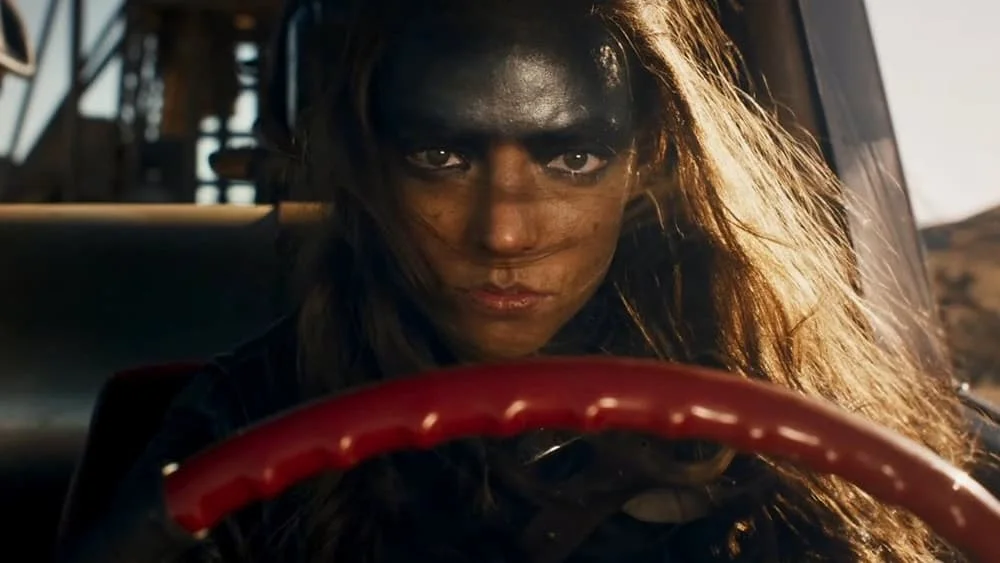The problems with “Furiosa: A Mad Max Saga” are the same that hinder every prequel to an exciting, beloved property. The most damaging, especially in this case, is that the bar has been set far too high by the previous installment. When “Max Mad: Fury Road” was released almost a decade ago, it was a shot in the arm for a sputtering action genre that was being taken over by comic book stories and largely driven by filmmakers coming out of the TV sphere — ones unequipped to pull off major action spectacle in the way the genre demands because their history is primarily in a dialogue-driven medium rather than a visual one. “Fury Road,” on the other hand, brought action cinema back to its roots in the silent era, with George Miller focusing far more on visual language than verbal. The success of that film is all in its editing, shot composition, and the expressiveness of its actors.
Miller’s approach in “Fury Road” has two major negative impacts on his latest effort “Furiosa.” The first is that there isn’t any new direction to take the action filmmaking. Where “Fury Road”’s action feels fresh and exciting, “Furiosa”’s feels safe and assured. That’s not to downplay Miller’s direction in “Furiosa,” the film has some brilliant set pieces — the thrilling, expertly staged raid and subsequent ambush at the Bullet Farm equals any sequence in the series — but it doesn’t feel new, it can’t feel new. But credit to Miller, he is not content to just do the same thing again, so to make “Furiosa” feel like an evolution, he tries to make the film more narrative-driven than the propulsive constant chase of “Fury Road” by digging into the mythos of the Furiosa character. Here’s where we get to the other major negative impact, and it ties into the problems every prequel faces.
The mythology in “Furiosa” is only hinted at in “Fury Road,” which creates an intriguing mystique around her and allows for a greater variety of readings about her character’s place in the world of the film. Now we have all the answers. It retroactively makes “Fury Road” less interesting because it forces us to have a specific idea of why Furiosa is the way she is and where she belongs in the world. Some people will like that, they will think it gives her character more depth and meaningfully builds out the Wasteland. To some extent, it does, but only if your preferred reading of her character matches what Miller’s intent seems to have been. However, even if it was, I still feel that the backstory was more compelling when implied rather than made explicit. It’s a similar problem that I have with a film like “Twin Peaks: Fire Walk With Me,” which fills in the gaps of the mystery surrounding Laura Palmer’s murder in ways that go against the inherent mysteriousness of the show.
Maybe I was never into the mythology of “Mad Max” enough to care about any narrative-driven installment of this franchise, and I’m sure there are plenty of people who are. Those people will probably love “Furiosa.” But for someone who just wants to feel like they felt watching “Fury Road” for the first time, nothing will be able to satisfy. Miller smartly doesn’t even attempt to recapture it, but in doing so, he leaves behind those crying out for more action films like it. I’m glad Miller wants to continue evolving as a filmmaker, but what do you do as an artist when you’ve already perfected your form? You just keep taking risks until you hit on something again.

